-
Posts
3,629 -
Joined
-
Last visited
-
Days Won
1
Content Type
Profiles
Forums
Blogs
Gallery
Events
Store
Posts posted by paja
-
-
I have finally found it! After going through 2014 catalogs one more time I decided to go further back, it was sold on Thies' 53rd auction (February 2, 2013). Catalog is available in .pdf format and can be found here, standard is on pages 161-2.
SERBIEN
165 Regimentsstandarte des 2. serbischen Kavallerie-Regiments „Zar Dusan I.“
Das Fahnentuch in den rot-blau-weißen serbischen Nationalfarben. Auf der Vorderseite
der gekrönte serbische weiße Doppeladler in feiner Stickereiqualität mit vergoldeten
Metallfäden und die Inschrift: „2. Regiment der Kavallerie – Zar Dusan der
Erstgenannte“ und „Für das Vaterland“.
Die Rückseite mit besonders fein ausgeführter Darstellung des Hl. Andreas in polychromer
Seidenstickerei und der Inschrift „St. Andreas der Erstgenannte – mit Glauben an Gott“ in
vergoldeter Metallfadenstickerei.
Die Fahnenbänder mit goldgestickter gekrönter Chiffre König Peter I. von Serbien
(1903 – 1918).
An originaler Fahnenstange mit vergoldeter Spitze. Die Seide stellenweise etwas brüchig,
insgesamt jedoch in dem Alter entsprechend guter Erhaltung.
Die Namensgebung des Regiments erinnert an den Zaren Stefan Uros IV. Dusan, der sich im
Jahr 1346 in der damaligen Hauptstadt des serbischen Reiches Skopje zum ersten Zaren der
Serben und Griechen krönte.
Diese Fahne wurde im Jahr 1966 von dem bekannten Pariser Händler René Johnson an den
serbischen Nationaldichter und Schriftsteller Dusan Matic verkauft.
Beigefügt die Originalrechnung Johnsons an Matic, verschiedene Fotos, eine Verkaufsbestätigung
Matics an den jetzigen Eigentümer, der von Matic verfasste Gedichtband
„Bagdala“ (französische Übersetzung) sowie ein Buch über die Geschichte der serbischen
Armee mit Abbildungen ähnlicher Fahnen.
Meines Wissens die einzige serbische Regimentsstandarte in Privatbesitz.
Extrem seltenes und bedeutendes historisches Liebhaberstück.This confirms the story posted above!
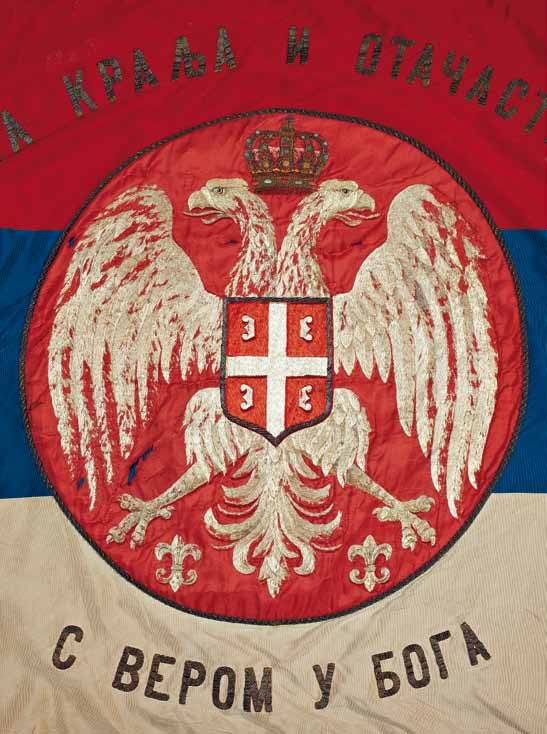
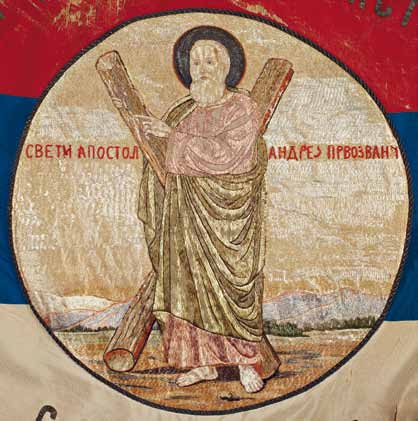
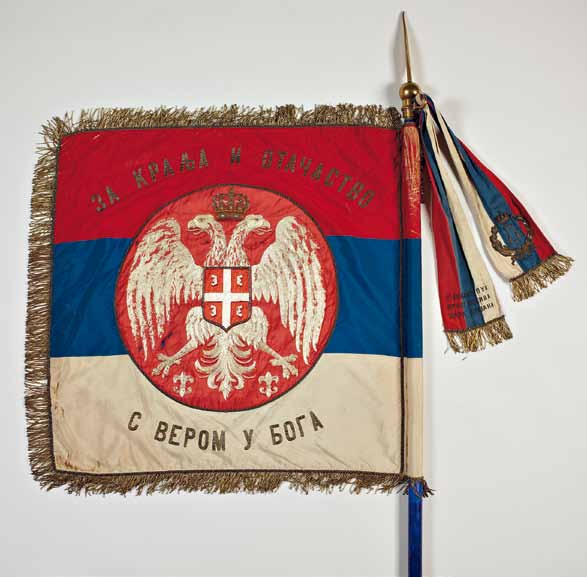
 0
0 -
I've been going through Thies auction catalogs from 2014 and I can't find this flag. I'll check one more time tomorrow just in case...
Best thing now would be to contact HGM and Military Museum in Belgrade personally (should have done it long time ago) and check with them some of these information I posted earlier. Before I get their replies just a short conclusion, Belgrade Museum claims they have 46 original flags, one more is in Paris and there are 4 missing. Out of those 4 it is certain that 2 were used during WW2 by the Yugoslav Army in the Fatherland. Perhaps the list of missing flags given in the article is not correct and the flag from Vienna is one of those missing two? And what about those stories about Berlin? Can someone shed more light to this matter?
I apologize for going off-topic but this matter is really interesting to me and I'm having troubles finding reliable information.0 -
I'm not sure because of the angle but that might be White Eagle 3rd class.
0 -
It looks like the name of the regiment ends with -ЂА so possibly "КАРАЂОРЂА" (KARAĐORĐA) which means the flag from the last photo could belong to 11th infantry regiment.
IR 11 was awarded with the Order of the Star of Karađorđe with Swords 3rd class so that third class with the missing central medallions is probably missing the swords as well.Since we are talking about regimental flags there's one in Vienna today. It was bought by the Museum in 2013 on Andreas Thies' auction #53, more information can be found here.
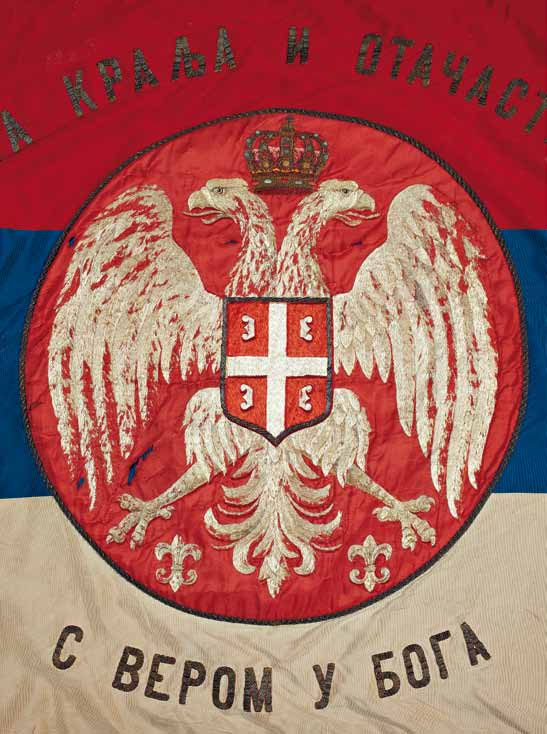
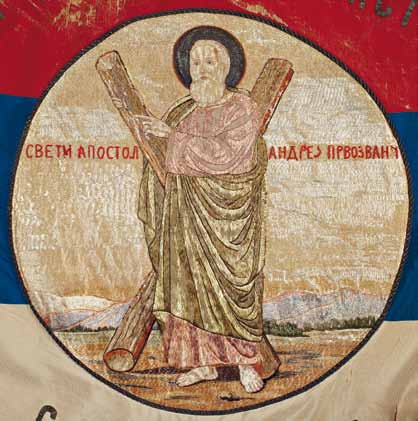
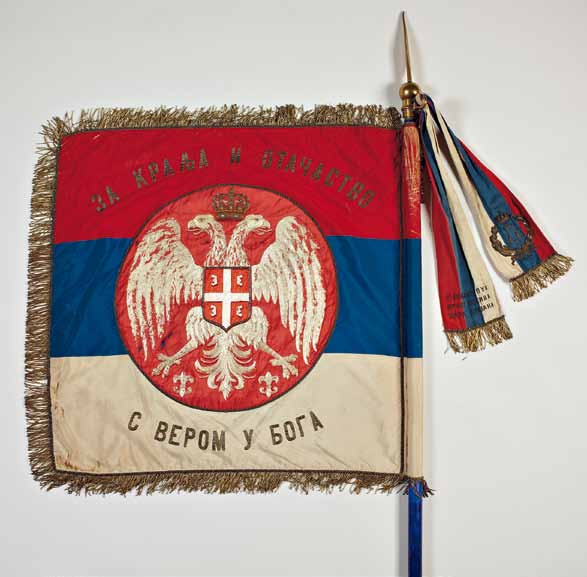
 0
0 -
Two articles (in Serbian) by Milan Bogojević with very interesting information:
Article 1
Article 2In short Mr. Bogojević contacted HGM and received the following answer from Dr. Christoph Hatschek:
"The flag is original. It belonged to the 2nd cavalry regiment "Emperor Dušan". Museum bought it in 2014 on Andreas Thies' auction for 17.000 euros."
It belonged to Rene Johnson who sold it to famous Serbian poet Dušan Matić in 1966. After some time, for unknown reasons, Matić decided to sell it to "Patrice & Patricia Reboul" antique shop where it spent a lot time before being offered to Andreas Thies in 2014.
Some questions still remain unanswered... What was going on before 1966? How come there are two original flags in two museums? According to Mr. Bogojević the most likely scenario is that the flag from Vienna got lost during WW1 which therefore means the flag from Belgrade is a copy made to replace it. The second flag was in official use until 1930 when it was replaced with new Yugoslav one. That might be one explanation why both flags are considered original.0 -
Interesting photo, should be from before December 1932 as the factory was completely relocated to Zemun at that time.
Novi Sad factory was producing seaplanes while the fighters were being made in Zemun.0 -
-
The reason why I reopened this topic is an article I stumbled upon today. Serbian sources state that not a single Serbian regimental flag fell in the enemy hands during 3 wars fought between 1912 and 1918.
These flags were introduced in 1911 and there were 51 of them in total:
-King's Guard: 1
-Infantry Regiments, I line: 20
-Infantry Regiments, II line: 15
-Cavalry Regiments: 4
-Divisional Cavalry Regiments: 5
-Divisional Cavalry Divisions: 5 (in Serbian коњички дивизон, cavalry unit of battalion size)
-Gendarmerie: 1Out of that number 46 are kept at Belgrade Military Museum and one in Paris, what happened with the rest is still a mystery. Anyway old Serbian flags were replaced with new Yugoslav ones in 1930.
List of the missing ones:
-2nd Infantry Regiment, I line, "Prince Mihailo", the most famous of all Serbian regiments nicknamed "The Iron Regiment"
-9th Infantry Regiment, I line, "King Nikola I"
-10th Infantry Regiment, I line, "Takovski"
-18th Infantry Regiment, I line, "Prince Đorđe"As we can see 2nd Cavalry Regiment's flag is not among them... Both Belgrade and Vienna Museum claim they have the original flag in their possession!
Two flags (IR 2 and IR 10) were used by the Yugoslav Army in the Fatherland during WW2. They can be seen on photos from 1944 so they survived WW1 without being captured but it is not known what happened with them after WW2. When it comes to the remaining two, according to some information one might have ended up in Berlin during WW2.
Now back to Vienna Museum, one can notice that the flag in their possession is in particularly good condition especially compared with some of them kept in Belgrade.
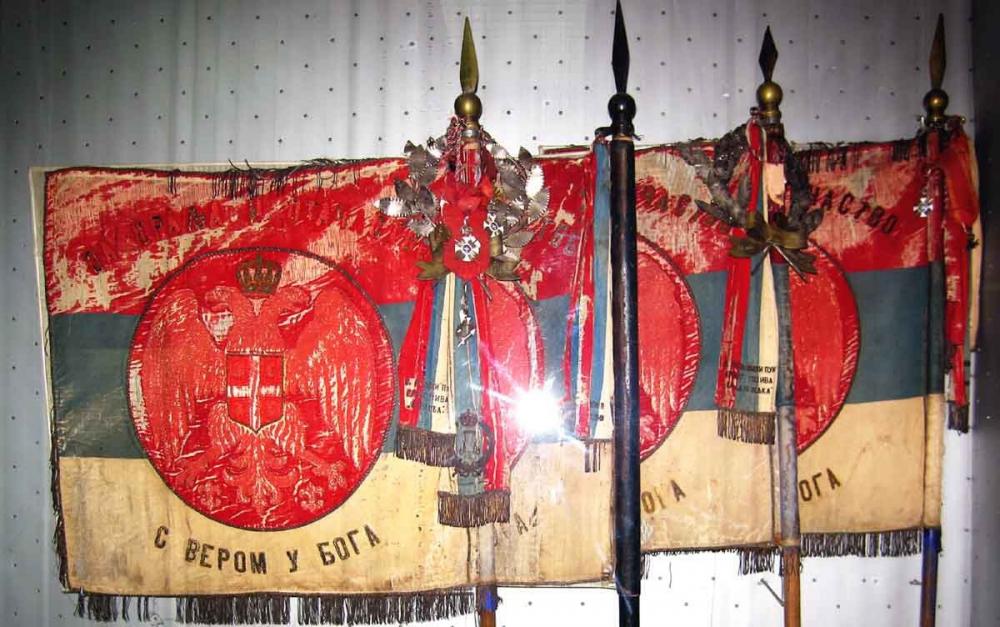
First photo found on Wikipedia, second one was posted on GMIC by our fellow collector.0 -
It's been over two years since my last reply in this topic. In the meantime I visited the museum and saw the flag in person, it is described as "Standard of the Serbian Cavalry Regiment No. 2 ('Tsar Dushan')". Here are couple of photos made on that occasion.

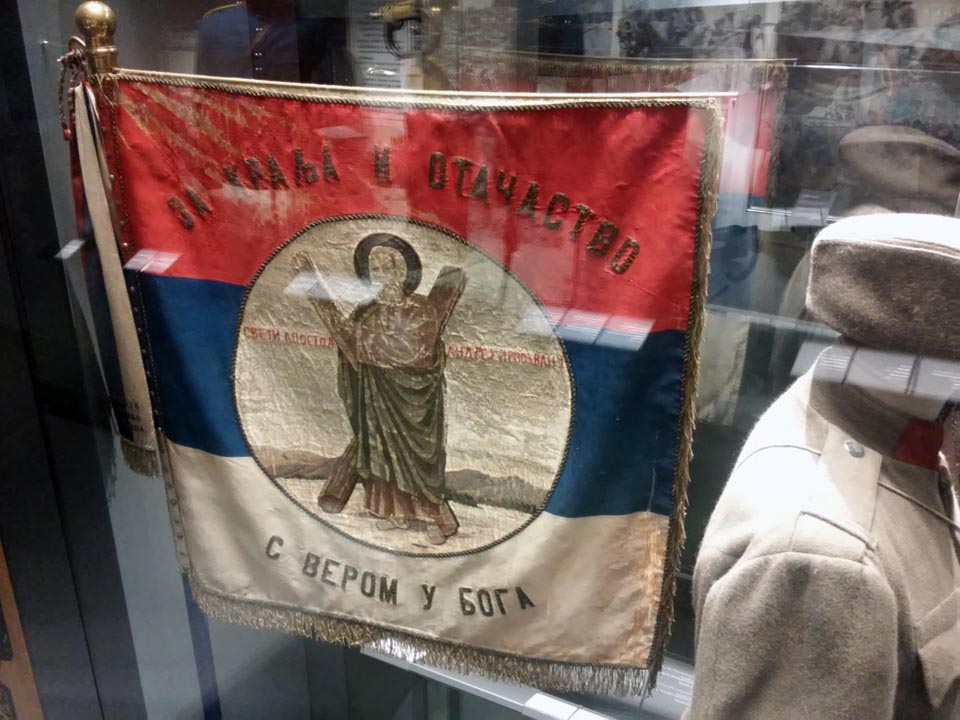
 0
0 -
-
List of members is available here.
Might be of use to someone doing a family or other kind of research. It includes information about rank, regiment, decorations, year and place of birth.
0 -
-
Next time I visit the Military Muesum I'll try to make as much photos as I can and post them in this topic...
Until then - a flag used on Yugoslav submarine Nebojša (Небојша) and Junkers JU87 tail found here.
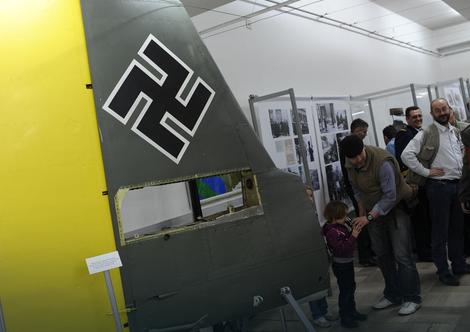 0
0 -
Many thanks, Graf!
I can't help but notice Karađorđe was not among offered decorations but yet appeared on emedals later. Does anyone know what happened with his Order of the Cross of Takovo?0 -
Thanks, I really wasn't sure about the recipient...
0 -
Some time ago there was Karađorđe 1st Class set by Scheid on emedals. Unfortunately I can't remember to whom it belonged but I'm pretty certain the person in question was Bulgarian or Romanian ruler, perhaps Ferdinand of Bulgaria...
Does anyone remember who was the recipient of this order?
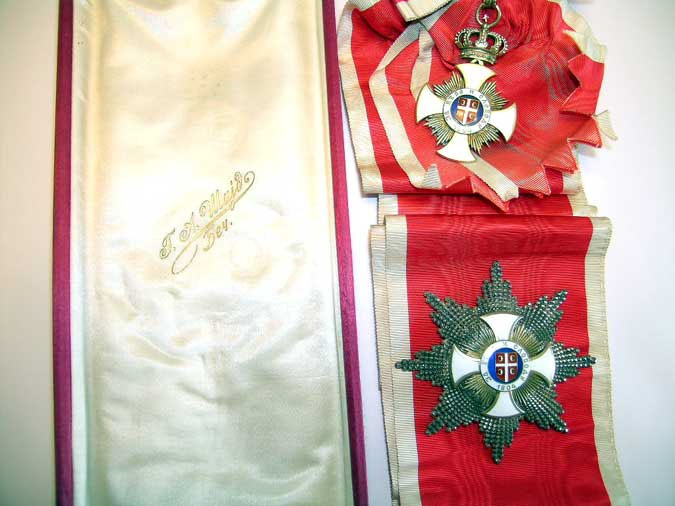 0
0 -
"In decorations’ collection are preserved orders and medals of members of statesmen like Stefan Stambolov, Konstantin Stoilov and others; as well as of the Bulgarian rulers after 1879 – Knyaz (Eng. – prince) Alexander I, Knyaz (since 1908 - Tsar) Ferdinand I and Tsar Boris III."
Information found on the Museum website, perhaps they have some of his decorations but not on display.I've noticed Academic Palms before but going back and forth all the time I forgot to mention it. It looks like that medal bar consists of both miniatures and full size decorations which is really unusual.
0 -
It's interesting to see how much this topic evolved since my last visit on Monday.
Sounds like the most of his decorations ended up at Sotheby's auction, is there none kept at the National Museum of Military History in Sofia? I was fortunate enough to visit in the past and if I remember well decorations of the Bulgarian heads of state were displayed on the last floor but somehow I forgot were there any that belonged to Ferdinand...It looks like he's wearing both the star and the "kleine decoration" of Hungarian St. Stephen Grand Cross on the painting above...
White Eagle ribbon looks bright blue to me as well and the order itself Polish. The question is how complete is the list of recipients from the Polish Wikipedia.
0 -
It certainly looks that way when it comes to medal bar, but still it doesn't seem very likely that the former Bulgarian head of state would be awarded by the Poles with their highest order... Apart from that there is a complete list of the recipients on Polish Wikipedia and I can't find his name there:
https://pl.wikipedia.org/wiki/Kategoria:Odznaczeni_Orderem_Orła_Białego_(II_Rzeczpospolita)
And how about that portrait from 1896, the order looks more like the Polish than Russian White Eagle but that is impossible.
Decorations of the German States are something I don't know very much about but I think I've managed to identify a few more from the 2nd medal bar we didn't already mention in the previous posts :
6th place - Saxon Military Order of St. Henry
9th place - Oldenburg Friedrich August Cross 2nd Class Military Division
10th place - Lippe-Schaumburg Loyal Service Cross 2nd Class on Combatants Ribbon0 -
20 minutes ago, ilieff said:
@paja Looks like the Prince has received the Badge of the Orthodox Palestine society well before that. Below is a photograph of Prince Ferdinand taken in Moscow in 1883 during the coronation of Emperor Alexander III.
Does anyone recognise the two arrowed decorations? The star looks something between Hohenzollern order and Star of Karađorđe.
Speak of the devil - That's Montenegrin Order of Danilo 1st Class star.
Above it Austrian Marian Cross of the German Knight Order (Marianer-Kreuz des Deutschen Ritterordens).
If the portrait we used previously is from 1896 then that White Eagle can't be Polish, Russian perhaps. But still the order on the medal bar looks Polish... What do others think?0 -
Don't mention it, my pleasure.
I've marked the badge and the star of St. Alexander with red arrows. I think the person decorated with the Order of St. Andrew automatically received St. Alexander, White Eagle, St. Anna 1st Class and St. Stanislaus 1st Class.Does anyone know from which period is the photo because it looks like he's also wearing Polish Order of the White Eagle (green arrow), of course 1921 variant. That order can also be seen of the 5th place of the 2nd medal bar on the red ribbon. Is this really the Polish White Eagle or some other amazingly similar decoration?
Being a head of state he must have been awarded with the 1st class of Montenegrin Danilo.
Ottoman decorations are not my field but the High Order of Honor (Al-i İmtiyaz Nişanı) it's not to be confused with the Order of Honor/Order of Distinction (İmtiyaz Nişanı), you can see how they look like on Turkish Wikipedia:
https://tr.wikipedia.org/wiki/Yüksek_İmtiyaz_Nişanı
https://tr.wikipedia.org/wiki/İmtiyaz_NişanıMay I suggest using variation "Order of the Star of Karadjordje" instead of "Karadzordze" (other way of writing đ is dj - and dž is different letter in Serbian Latin alphabet). First Class does equal Grand Cross, it's the highest class.
You can use "Edit" button underneath your replies. This option is available for couple of days, I'm not sure how long exactly.
0 -
Last few not-working ones I saw were in the 100-200 EUR range (prices in Serbia). I still regret not getting one with 100 EUR price tag as it was in very good shape with original box and instructions manual, but alas, someone was quicker.
0 -
One more thing caught my attention it seems that he's wearing the Golden Badge of the (Russian) Imperial Orthodox Palestine Society (Императорское православное палестинское общество) which means he must have been its honorary member.
I do not know a lot about this orthodox society but it seems a bit unusual to see a person of catholic faith among its honorary members.0 -
I just found his name in the list of recipients of Order of the Cross of Takovo 1st class and Order of the Star of Karađorđe 1st class published in Mr. Acović's book "Glory and Honor - Decorations Among Serbs, Serbs Among Decorations" (Слава и част, одликовања међу Србима, Срби међу одликовањима).
0




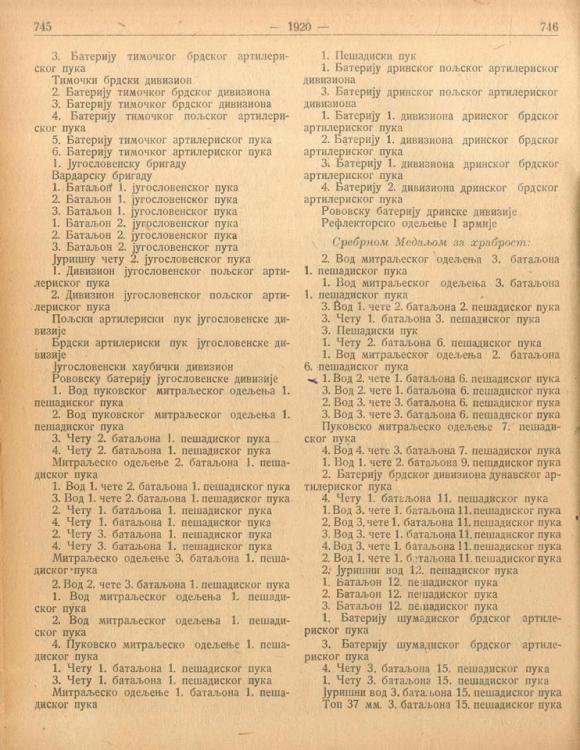
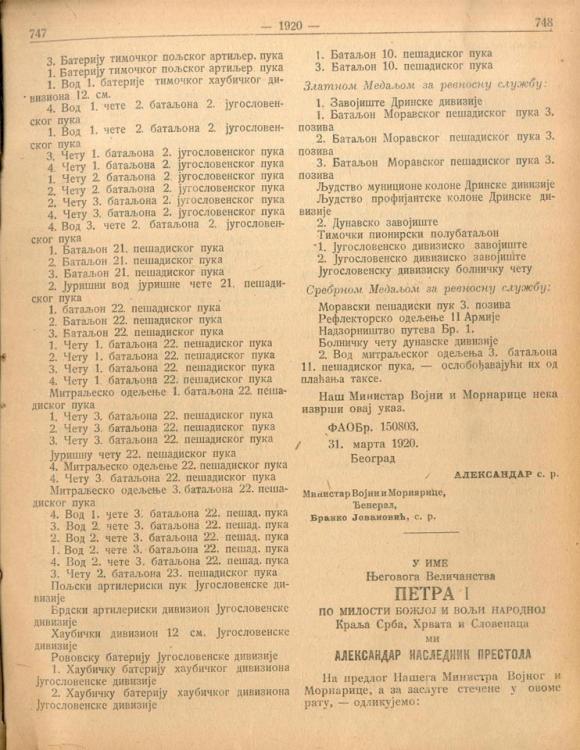
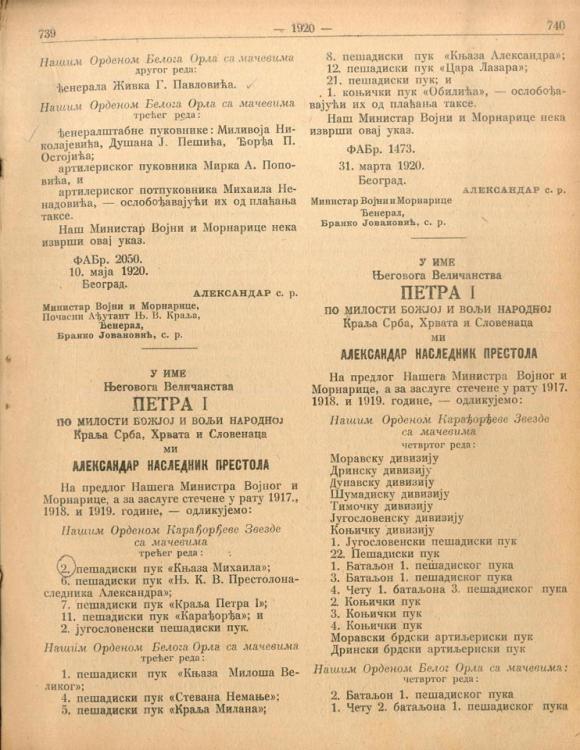
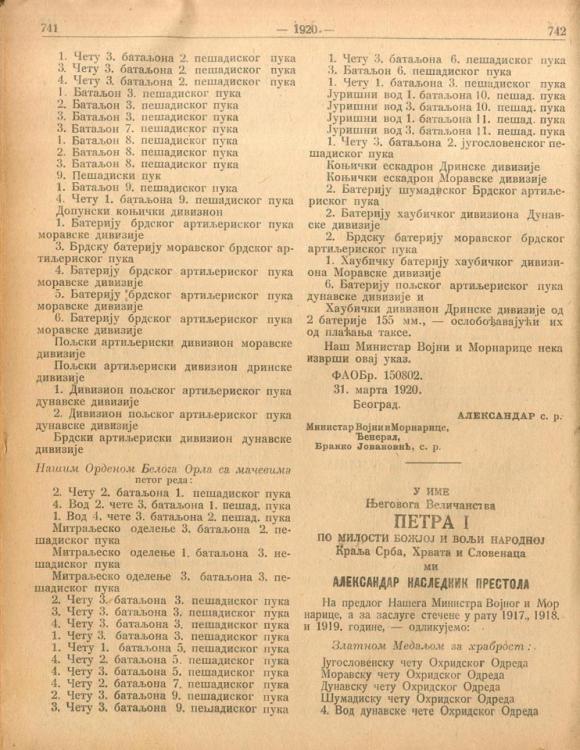

medal or patriotique jetton ?
in Southern European & Balkan States
Posted
One like yours got sold over ebay couple of weeks ago, you can find it here.
Seller's description:
"Very Rare WW1 French Commemorative Medal For Serbia
During WW1, as a way of fundraising, the French Government authorised groups to organize nationwide days that became known as "Journées". These days normally helped to raise funds for French soldiers (les Poilus), their wives and children. Other days were set aside to raise funds for allied forces such as Belgium and, in particular Serbia - a country that suffered devastating military and civilian casualties. By the end of 1915, it was estimated that one sixth of the country's population was dead.
This beautiful and rare hollowed white metal medal measures 43 x 34 mm and has the Serbian Royal Coat of Arms which consists of two main heraldic symbols representing the national identity of the Serbian people across the centuries - the Serbian eagle (a white double-headed eagle adopted from the Nemanjić dynasty) and the Serbian cross. It bears the legend "Tempus Et Meum Jus" (The Time Is Right), the motto of Milan Obrenović who was the ruler of Serbia from 1868 to 1889, first as Prince (1868-1882), subsequently as King Milan I (1882-1889)."
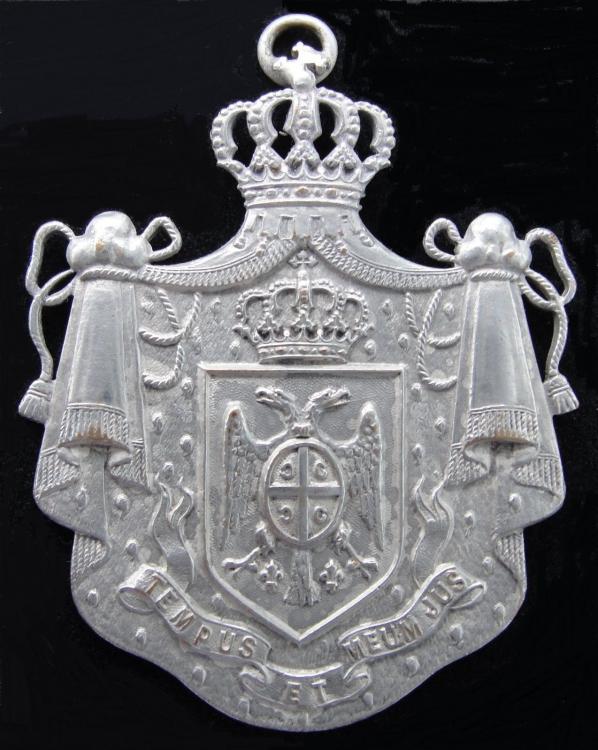
.thumb.jpg.905edf9e8723d66749dd568269a09e6c.jpg)